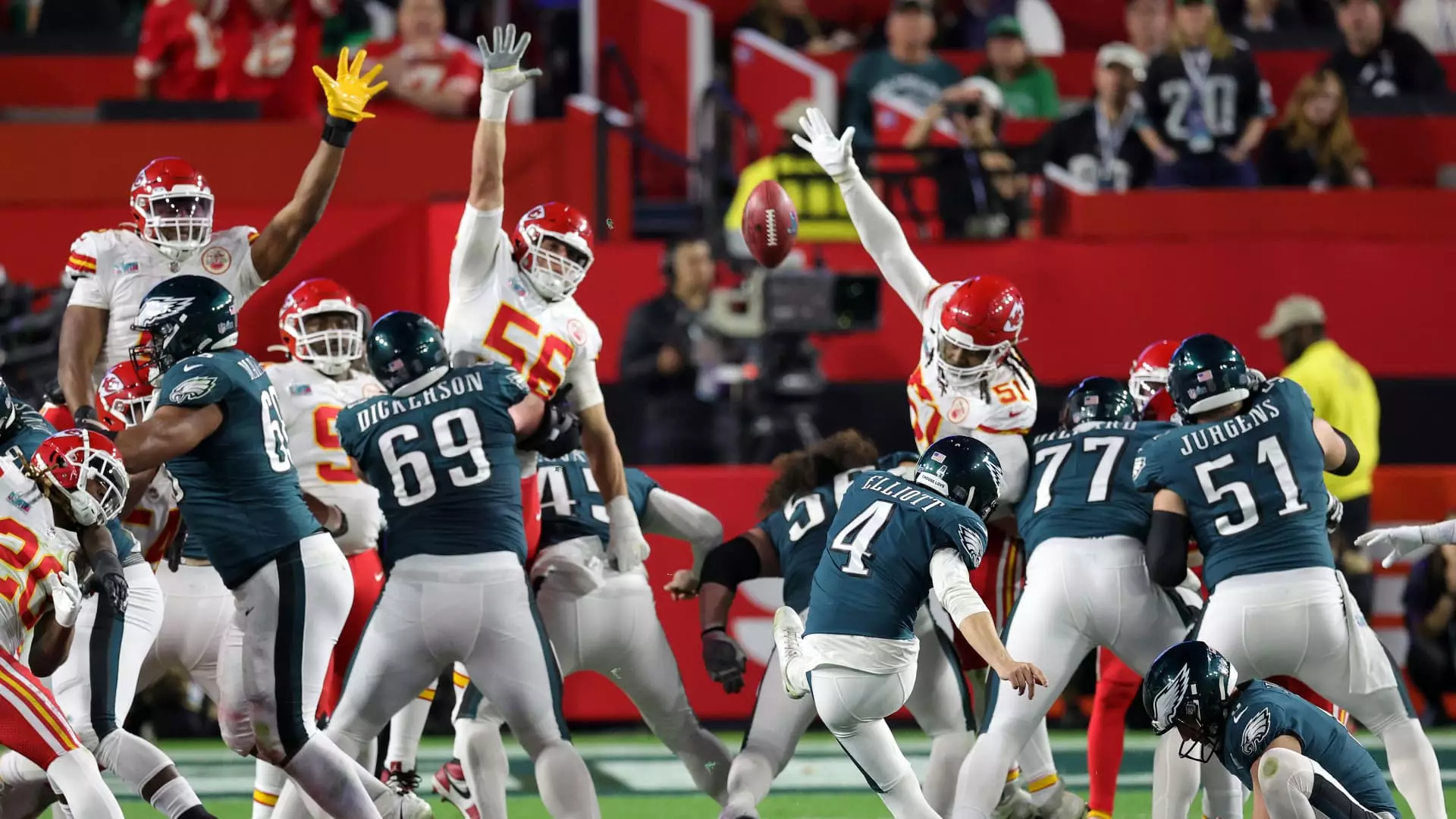As the Super Bowl draws near, a striking shift in advertising dynamics has come to light. For Super Bowl 59, scheduled for February 9, Fox Corporation has successfully sold out its ad inventory, achieving a remarkable feat in a saturated market. Reports indicate that over ten ad slots have fetched an astonishing $8 million each, showcasing the event’s lucrative appeal. This development speaks volumes about the evolving landscape of live sports broadcasting, where traditional media companies are capitalizing on unique opportunities to engage extensive audiences.
The significance of these numbers cannot be overstated. During November’s earnings conference, Fox’s CEO, Lachlan Murdoch, boasted about achieving record pricing, emphasizing the strategic timing of ad spot sales initiated during their Upfront presentation in the previous spring. The rapid increase in pricing—a staggering $500,000 jump per spot as the days to the event counted down—underscores advertisers’ fierce competition for visibility during this cultural phenomenon. A perfect combination of dwindling slots and escalating demand encapsulates the reality of Super Bowl advertising.
The reason behind this voracious demand lies in the extraordinary viewership numbers that Super Bowl broadcasts consistently draw. In recent years, the Super Bowl has attracted audiences surpassing 115 million, making it a prime platform for advertisers looking to reach wide demographics. This trend hasn’t escaped the attention of media analysts, who suggest that the ongoing decline in traditional cable viewership has paradoxically heightened the value of live sports programming. Mark Evans, Fox Sports’ executive vice president of ad sales, highlights this shift, indicating that audiences are increasingly seeking communal viewing experiences—a testament to the Super Bowl’s enduring cultural significance.
This year’s matchup between the Kansas City Chiefs and the Philadelphia Eagles promises to be a spectacle, extending the event’s appeal far beyond mere sports fans. The gambling, social gatherings, and even parties that accompany Super Bowl Sunday ensure a captive audience that is simply irresistible for brands across various sectors.
Changing Landscape of Advertisers
A closer examination of this year’s advertisers reveals a fascinating evolution in the marketplace. While traditional players like automakers and fast-food chains continue to dominate, there’s an emerging trend of investment from the artificial intelligence and pharmaceutical sectors. This suggests a shifting narrative, where digital innovation and health considerations are becoming increasingly relevant to mainstream audiences.
Interestingly, the anticipated reductions in advertising from streaming services and major film studios indicate how the current media environment is maturing. As viewing habits continue to evolve, these entities are reassessing their advertising strategies, leading to a recalibration of their presence in high-profile events like the Super Bowl.
Moreover, advertisers are not just increasing their spend but are also revamping their creative strategies in accordance with changing consumer tastes. The embrace of 60-second ads—succinct yet powerful storytelling—alongside the traditional 15- and 30-second slots demonstrates a more profound understanding of audience engagement.
In an innovative move, Fox has announced that Super Bowl commercials will also run on its free, ad-supported streaming service, Tubi. This development enhances the potential for advertisers, who can now maximize their reach in a multi-platform arena. The opportunity to connect with viewers across various devices and formats amplifies brand visibility, ensuring that each campaign resonates across diverse demographics.
The fragmentation of media consumption necessitates these shifts toward digital platforms, and Fox’s strategy reflects an awareness of the multifaceted landscape in which consumers are now immersed. As advertisers prepare for the big game, they recognize that the real power lies not just in winning the coveted ad slots but also in creatively capturing and holding viewer attention in this competitive sports ecosystem.
Ultimately, the Super Bowl represents more than just a sporting event; it is a marketplace where brands vie for visibility in an increasingly complex media environment. As the advertising landscape continues to evolve, the premium placed on live sports—and the Super Bowl in particular—remains a steadfast criterion for success. The implications for brands willing to invest are enormous, suggesting that the Super Bowl will maintain its status as a premier advertising opportunity for the foreseeable future. As we look toward the game, one thing is clear: when it comes to balancing cultural moments and advertising innovation, the Super Bowl remains an unparalleled platform for brands hungry for recognition.

